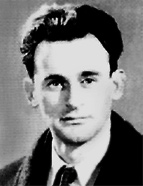

After returning to Paris at the end of the war, Silbert reached out to Fernand Braudel for advice on choosing a thesis topic. Braudel immediately suggested Portugal, a subject of great interest to him. Around this time, through Braudel, Silbert met Vitorino Magalhães Godinho, who had recently arrived in the French capital. Through him, Silbert was introduced to other Portuguese historians, particularly Joaquim Barradas de Carvalho, with whom he formed a strong friendship that he would continue to emphasise throughout his life. The decision to study the landowning structures of the Mediterranean world through the lens of Portugal became Albert Silbert's guiding objective. To analyse this topic, he drew on the teachings of Ernest Labrousse, from whom he learnt, in his own words, "like so many generations of French historians, what an economic history that refuses to forget men should be" ( Le Portugal Méditerranéen..., p. 9).
Entirely dedicated to his thesis, he was able to spend 14 months in Portugal between 1948 and 1950, marking his first encounter with the country's national archives and enabling closer engagement with Portuguese researchers. In addition to historians, Silbert also established connections with geographers, aligning with his own academic background. Among them was Orlando Ribeiro, with whom he shared a vibrant friendship and intellectual dialogue. Some of the issues raised by Ribeiro, particularly those linked to agrarian collectivism, such as the open fields in Beira Baixa, resonated with the lessons Silbert had absorbed from Marc Bloch and Georges Lefebvre in the realm of agrarian history. In the aforementioned interview reflecting on his early explorations of Portugal, Silbert highlighted the importance of field visits to his studies. These included trips with Orlando Ribeiro to central Portugal and with geomorphologist and farmer Mariano Feio to the Alentejo and Algarve, where he believed Feio had taught him everything there was to know about farming in the Alentejo. He also interacted with ethnologists like Jorge Dias, whom he met through Feio. Through these connections, Silbert explored the northern region of Portugal, particularly Minho, where he observed the agras—the mini-open fields previously studied by Alberto Sampaio (Interview with Ler História no. 5 (1985), p. 123).
This work is financed by national funds through FCT - Foundation for Science and Technology, I.P, in the scope of the projects UIDB/04311/2020 and UIDP/04311/2020.
